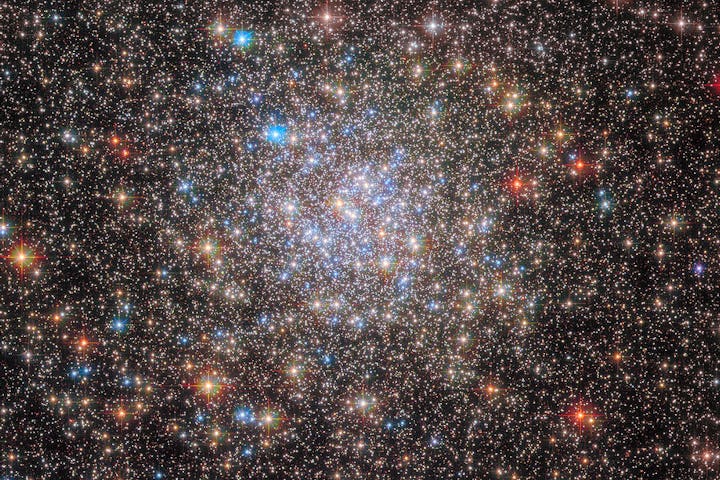This Hubble Photo Of Star Clusters Is A Colorful, Glittering Surprise
It’s not glitter. It’s globural.

It’s the first week of 2023, and the Hubble Space Telescope has already picked up where it left off last year. The classic telescope has been delivering incredible images along with the James Webb Space Telescope, and the latest from Hubble shows a beautiful cluster of stars.
The new photo looks like brightly speckled stars with thousands of bright spots with a few larger areas that shine brighter than the others. It almost looks like someone spilled a bowl of gliter onto a black floor and shined a light on it.
But obviously, that’s not what we’re seeing. So what are we looking at? It’s not glitter, but a globular cluster called NGC 6355, an area of space approximately 50,000 light-years from Earth, according to European Space Agency (ESA).
Explaining the new photo of the star clusters like you’re 5:
Each bright dot on the image represents a star, and there are millions of stars in this area. The NGC 6355 is a “galactic globular cluster” that lives within the inner regions of our Milky Way galaxy in the Ophiuchus constellation.
But what is a globular cluster? ESA explains that “globular clusters are stable, tightly bound groups of tens of thousands to millions of stars associated with all types of galaxies.”
These areas have a lot of stars that have their gravitational pull, causing them to feel pressure from all directions, which changes the shape of these stars to be more spherical. Some stars are larger than others, which is why they’re brighter.
“The dense, bright core of NGC 6355 shines in crystal-clear detail as Hubble can resolve individual stars in the crowded area toward the center of this image,” ESA explains.
“Hubble’s unique capabilities and vantage point above Earth’s light-distorting atmosphere allow it to capture [the] globular cluster’s constituent stars in detail.”
The image looks like glitter, but if we were right in the area, each of those glitter specks would be massively huge stars.
For more information on the newly released image, be sure to check out NASA’s details.
This article was originally published on